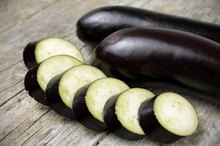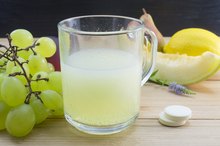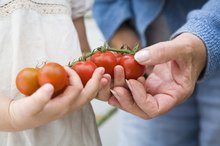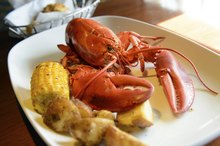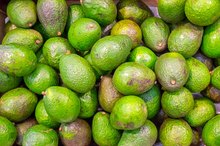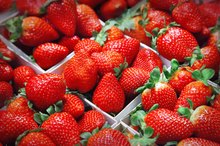What does fact checked mean?
At Healthfully, we strive to deliver objective content that is accurate and up-to-date. Our team periodically reviews articles in order to ensure content quality. The sources cited below consist of evidence from peer-reviewed journals, prominent medical organizations, academic associations, and government data.
The information contained on this site is for informational purposes only, and should not be used as a substitute for the advice of a professional health care provider. Please check with the appropriate physician regarding health questions and concerns. Although we strive to deliver accurate and up-to-date information, no guarantee to that effect is made.
Alkaline Diet to Treat Gout
The foods you eat can affect the levels of different compounds in your bloodstream. In some cases, your diet can affect your risk of developing certain conditions, such as gout, an extremely painful form of arthritis. One way of preventing gout flareups is to avoid foods that cause the production of uric acid, and to instead eat a diet heavy in alkalizing foods, which can help neutralize excess acid in the body.
If you are experiencing serious medical symptoms, seek emergency treatment immediately.
Gout Symptoms
Gout is a form of arthritis that can cause intense pain in the joints. Gout characteristically affects the joint of the big toe, and can cause excruciating pain which can be triggered by even very slight pressure. If you have gout, the affected joints will also be swollen and warm to the touch, and the symptoms may be worse at night.
Gout Pathology
Foods That May Cause Joint Pain
Learn More
Gout is caused by an excess of uric acid. When uric acid levels in the blood get too high, the uric acid can form small crystals in the joints, which results in intense inflammation. The inflammation is responsible for the pain, warmth and swelling associated with gout. Foods high in a compound known as purines are able to increase uric acid production in the body, resulting in gout.
- Gout is caused by an excess of uric acid.
- Foods high in a compound known as purines are able to increase uric acid production in the body, resulting in gout.
Gout Diet and Acid
One of the tenets of a diet to treat gout is to avoid purine-rich foods. These include many different organ meats, such as liver, sweetbreads and kidneys, and certain kinds of fish. Not only do these meats contain high levels of purines, they are also identified as acid-producing foods, suggesting that there is a link between acidic foods and gout.
Alkaline Foods
Gout and Shrimp
Learn More
The theory behind an alkaline diet for gout is that alkaline foods can help neutralize the uric acid in the body, thus reducing the risk of uric acid crystals accumulating in the joints. Most vegetables are classified as alkaline, including such green vegetables as broccoli, spinach, Brussels sprouts and asparagus. Fruits are also alkaline, including citrus fruits, because they stimulate the production of alkaline chemicals by the body. Because uric acid is directly responsible for gout, neutralizing the acid in the body can help treat gout flareups and prevent gout attacks.
- The theory behind an alkaline diet for gout is that alkaline foods can help neutralize the uric acid in the body, thus reducing the risk of uric acid crystals accumulating in the joints.
Considerations
Gout pain is often incapacitating. Although a proper diet can help relieve some symptoms of gout, patients experiencing an acute gout episode may need to seek more immediate treatment from their doctor, rather than waiting for the benefits of an alkaline diet to occur. In these cases, patients may need to take non-steroidal anti-inflammatory drugs, prescription pain killers and colchicine, MedLinePlus notes 2. Injected corticosteroids can also be very effective at relieving the pain and inflammation caused by gout until the excess uric acid has been neutralized.
- Gout pain is often incapacitating.
- Injected corticosteroids can also be very effective at relieving the pain and inflammation caused by gout until the excess uric acid has been neutralized.
Related Articles
References
- Mayo Clinic: Gout Diet
- MedLinePlus: Gout
- National Institute of Arthritis and Musculoskeletal and Skin Diseases. Gout. Updated April 2016.
- Zhang Y, Chen C, Choi H, et al. Purine-rich foods intake and recurrent gout attacks. Ann Rheum Dis. 2012; 71(9):1448-53. doi:10.1136/annrheumdis-2011-201215
- Fischer E. Ueber die Harnsauer. 1 [On Uric Acid. 1]. Berichte der Deutschen Chemischen Gesellschaft. 1884: 17:328-338. doi:10.1002/cber.18980310304
- Ragab, G., Elshahaly, M., & Bardin, T. (2017). Gout: An old disease in new perspective – A review. Journal of Advanced Research, 8(5), 495–511. doi:10.1016/j.jare.2017.04.008
- Centers for Disease Control and Prevention. Gout. Updated January 28, 2019.
- Zgaga, L., Theodoratou, E., Kyle, J., Farrington, S. M., Agakov, F., Tenesa, A., … Campbell, H. (2012). The Association of Dietary Intake of Purine-Rich Vegetables, Sugar-Sweetened Beverages and Dairy with Plasma Urate, in a Cross-Sectional Study. PLoS ONE, 7(6), e38123. doi:10.1371/journal.pone.0038123
- Choi HK, Gao X, Curhan G. Vitamin C intake and the risk of gout in men: a prospective study. Arch Intern Med. 2009;169(5):502–507. doi:10.1001/archinternmed.2008.606
- Zhang Y, Neogi T, Chen C, Chaisson C, Hunter DJ, Choi HK. Cherry consumption and decreased risk of recurrent gout attacks. Arthritis Rheum. 2012;64(12):4004–4011. doi:10.1002/art.34677
- Arthritis Foundation. Gout Diet: Dos and Don’ts.
- Boban M, Modun D. Uric acid and antioxidant effects of wine. Croat Med J. 2010;51(1):16–22. doi:10.3325/cmj.2010.51.16
- Caliceti C, Calabria D, Roda A, Cicero AFG. Fructose Intake, Serum Uric Acid, and Cardiometabolic Disorders: A Critical Review. Nutrients. 2017;9(4):395. Published 2017 Apr 18. doi:10.3390/nu9040395
- U.S. Department of Health and Human Services and U.S. Department of Agriculture. 2015–2020 Dietary Guidelines for Americans. 8th Edition. Published December 2015.
- U.S. Department of Health and Human Services. Gripped by Gout. NIH News in Health. Published February 2014.
- Kakutani-Hatayama M, Kadoya M, Okazaki H, et al. Nonpharmacological Management of Gout and Hyperuricemia: Hints for Better Lifestyle. Am J Lifestyle Med. 2015;11(4):321–329. Published 2015 Sep 2. doi:10.1177/1559827615601973
Writer Bio
Adam Cloe has been published in various scientific journals, including the "Journal of Biochemistry." He is currently a pathology resident at the University of Chicago. Cloe holds a Bachelor of Arts in biochemistry from Boston University, a M.D. from the University of Chicago and a Ph.D. in pathology from the University of Chicago.


